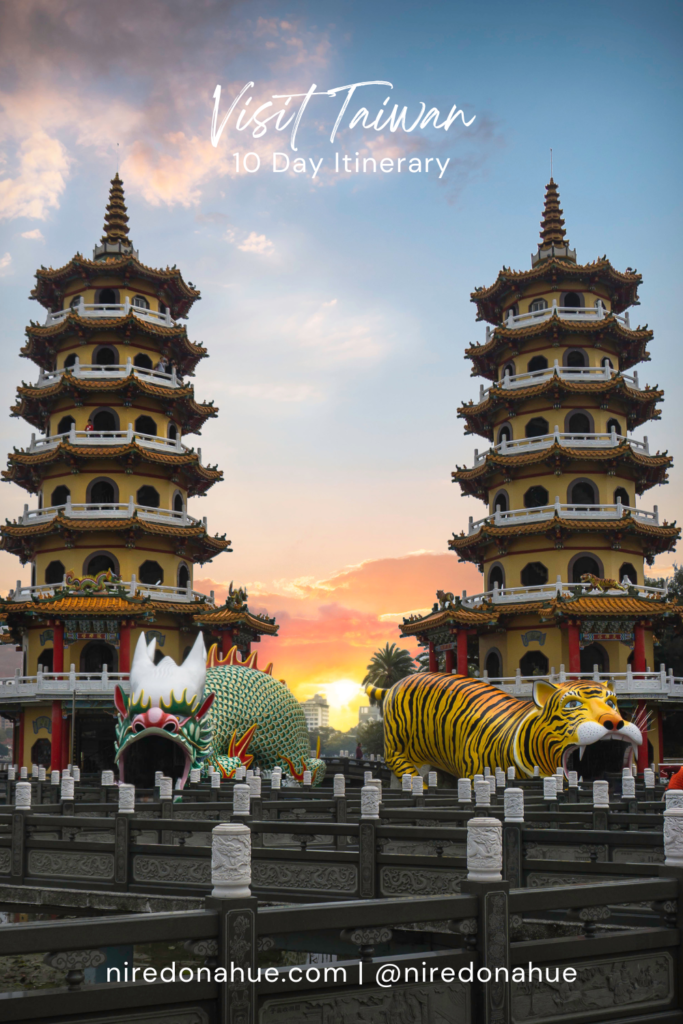First-Timer’s Guide to Traveling Taiwan in 10 Days
January 25, 2023
Last Updated on June 18, 2024 by
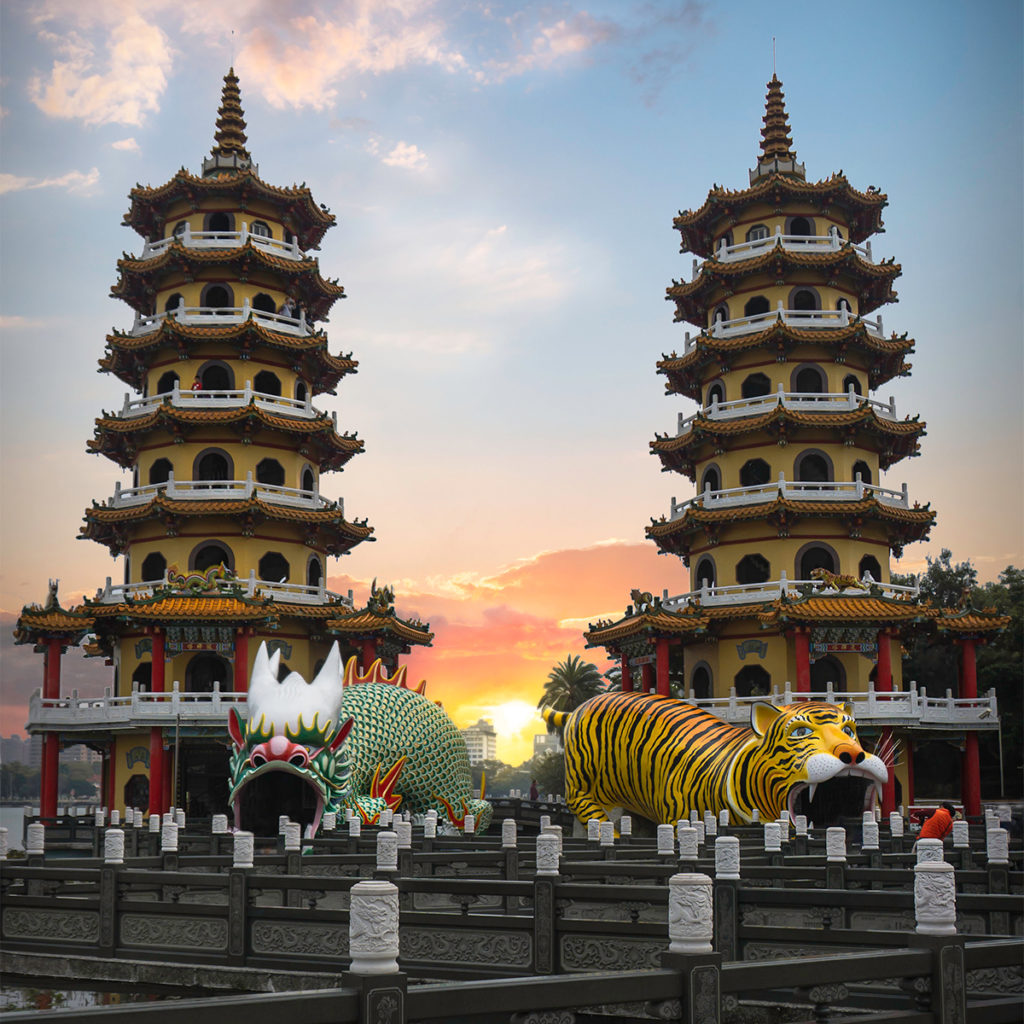
If you’re planning a trip to Taiwan (台灣) and only have ten days to explore, you’ll want to make the most of your time. Its nickname is Formosa, which means “beautiful island,” and b-e-a-utiful it is! The designation originally came from the Portuguese who occupied this small, but strategic island in the Pacific for a time. Taiwan’s placement in the ocean is so crucial that it’s also been occupied by the Dutch and Japanese.
Taiwan is a country filled with natural beauty, unique culture, and the best food, making it a perfect destination for travelers! From the bustling capital city of Taipei (臺北) in the north to the tranquil forests of Alishan in the center, to the laid-back attitude of Kenting (墾丁) in the south, Taiwan has something for every type of traveler and has a wealth of photographic opportunities!
Disclosure: Some links may be affiliate links. This means that I may earn a small commission if you decide to buy (at no additional cost to you).
Lucky Land International Tourism Attraction Program
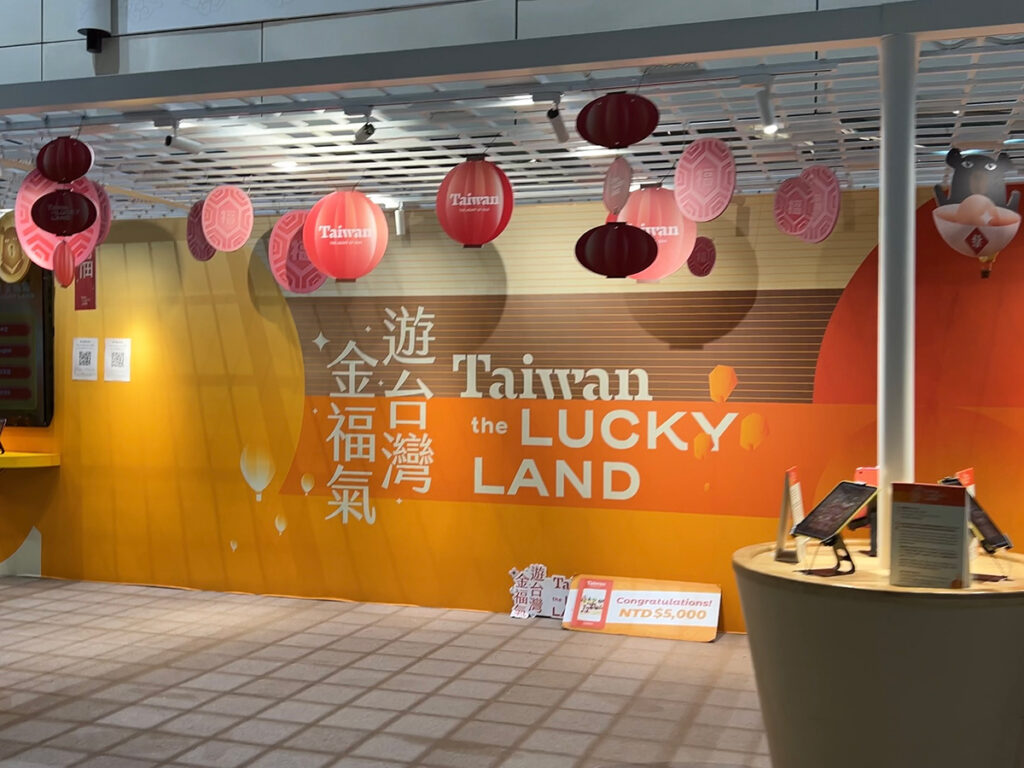
If you fly into Taiwan between May 2023 and June 2025, test your luck and see if you win Taiwan’s Lucky Land International Tourism Attraction lottery for some spending money. Even though the island is the size of New Jersey and is home to ~24,000,000 people, the Taiwan Tourism Bureau has been trying to promote tourism in the country post-COVID. The website is a bit clunky and makes the registration process a bit frustrating. What do you expect from a government-run site?
The prize is NT$5,000 which converts to about $150-$160. It might not seem like a lot, but wouldn’t you rather have free money to spend than not? The Taiwan Tourism Bureau will be awarding 500,000 tourists during the campaign. Unfortunately, I didn’t get lucky on my most recent trip, but my baby niece did!
Eligibility
Foreign travelers staying between 3-90 days and who are not part of tour groups can enter to have a chance at winning NT$5,000 in consumption vouchers.
Lucky Draw Process
Be sure to register for the lottery within a week before arriving in Taiwan. After clearing customs and grabbing your luggage, you’ll find a dedicated section in the arrival hall to scan your QR code. If that lucky lottery screen lights up with a win, simply head to the staff stand directly behind the activation area to claim your prize.
Prize Options
The NT$5,000 prize can be redeemed either as either an E-Ticket-iPass, E-Ticket- EasyCard or accommodation vouchers.
What to do in Taipei (臺北)
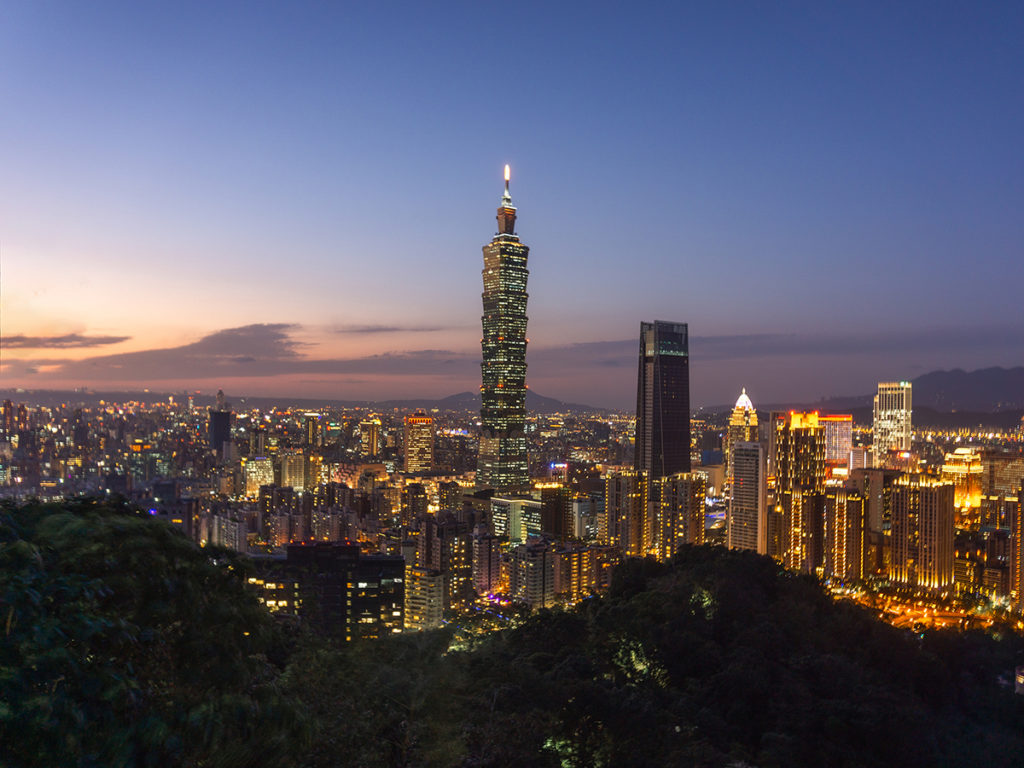
One of the must-visit cities on any trip to Taiwan is Taipei. As the country’s capital, it’s a vibrant metropolis of activities, culture, history, and modernity everyone can enjoy. There’s so much to do in Taipei alone and it’s so convenient living there. If there was a city outside of New York City I would want to live in, it’s Taipei!
Over the years, I’ve observed the evolution of how Taipei’s become more friendly toward English speakers in particular. Signs everywhere now include English translations which makes it easy to navigate. As someone who is bi-racial and looks more Western, I used to get stares all the time when I was in Taiwan as a kid. Each year that I go back now as an adult the stares have faded away since tourists have been flocking to this incredible country in East Asia.
For first-time visitors
The equivalent of going to an observatory in NYC, a must-see attraction is the Taipei 101 building, aka “101,” which was once the tallest building in the world from 2004 to 2010. Visitors can take the elevator to the observation deck on the 89th floor for breathtaking views of the city.
Hike Elephant Mountain (Xiangshan 象山步道)
For some of the most breathtaking views of Taipei that include 101 in the scene, take the MRT red line to the last stop, Xiangshan Station. From there, exit the station and look for signs that say “Xiangshan Hiking Trail.” Yes, you will need to actually do some hiking! The trail is paved and is made up of stairs at an incline. Some physical fitness is required, but there is a railing and viewing platforms to take rests at.
This is one of the photographer’s meccas in the city and it does get crowded, especially at sunset. If you want to get a spot definitely go early!
The perfect day trip from Taipei
If you’ve ever watched Studio Ghibli’s Spirited Away, a day trip to Jiufen Old Street (九份老街) is a requirement! This village is what inspired Hayao Miyazaki to create his masterpiece movie. Many villages look like Jiufen but aren’t as touristy. However, they’re harder to get to unless you go with a local Taiwanese tour guide or driver.
For Foodies
If you’re looking to experience authentic Taiwanese snacks and street vendors, a visit to one of Taipei’s many night markets is a must! There’s the Shilin Night Market (士林夜市), one of the largest and most popular markets, and also the Raohe Night Market (饒河街觀光夜市) in Songshan District (麻里折口). I love the street food in Taiwan and probably gain 10 pounds every time I go. It’s unparalleled and so delicious! There are a ton of other famous night markets around the island as well like in Tainan and Kaohsiung in the south.
For Shoppers
Ximending (西門町) is known as the “Harajuku of Taipei” and is one of the main shopping districts in the city, especially for younger people. It’s fun and glitzy and also a perfect place to people-watch since there’s a crosswalk that’s also similar to Tokyo’s Shibuya Crossing.
For Relaxation
For a more relaxed experience, visitors can take a dip in the Beitou (北投) Hot Springs, which are known for their therapeutic properties. The hot springs are located in a beautiful mountain setting and offer a great escape from the hustle and bustle of the city.
For History Buffs
Another popular attraction is the Chiang Kai-shek Memorial Hall (中正紀念堂), a monument dedicated to Taiwan’s former president. The hall is surrounded by beautiful gardens and is a great place to take a stroll and learn about Taiwan’s history. Depending on who you talk to in Taiwan, Chiang Kai-shek was not a good leader in Taiwan so I always found it odd that there’s a massive memorial hall dedicated to him. That being said, it’s still a large campus with cool stuff to see inside.
Pay your respects at a temple
Finally, no visit to Taipei is complete without visiting one of its many temples. The Longshan Temple (艋舺龍山寺) is a particularly beautiful example, with intricate carvings and colorful paintings that are sure to impress.
Visit Lesser-Known Hsinchu (新竹)
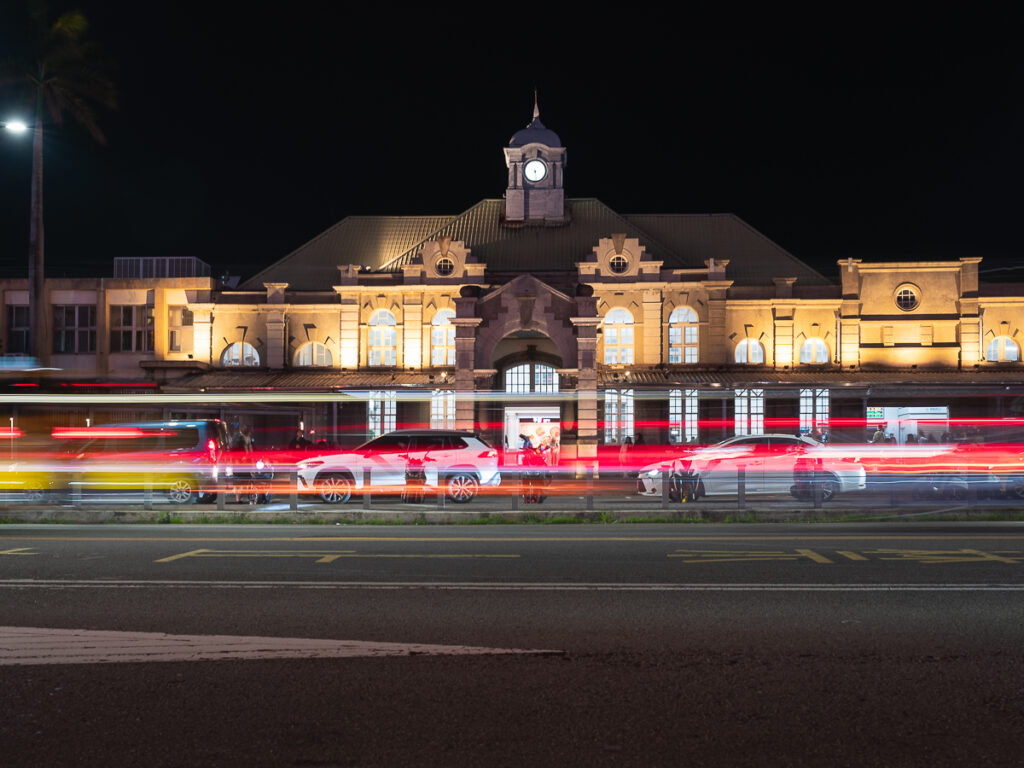
Often overshadowed by Taiwan’s larger cities like Taipei (臺北) and Kaohsiung (高雄), Hsinchu (新竹) offers visitors a unique blend of culture, history, and nature. Fun fact: Hsinchu is my second home and I’ve been flying back for over 30 years! Since I was a kid I would spend every summer to be with my family.
With only 10 days to explore Taiwan, you’ll need to prioritize your activities. Even though Taiwan is about the size of New Jersey, there’s so much to see and do! No matter your plans, you’ll be sure to fall in love with Taiwan and all it has to offer.
Head South To Tainan (臺南市)
Part of your 10-day Taiwan itinerary should be dedicated to visiting other parts of the island. Tainan was the former capital of the island before it moved North. It’s known for its numerous temples and significant historical sites, more than 50 of which are officially listed as national treasures.
I’d say a good amount of time to explore Tainan fully is about 3 days or so.
Explore Alishan National Forest (阿里山)
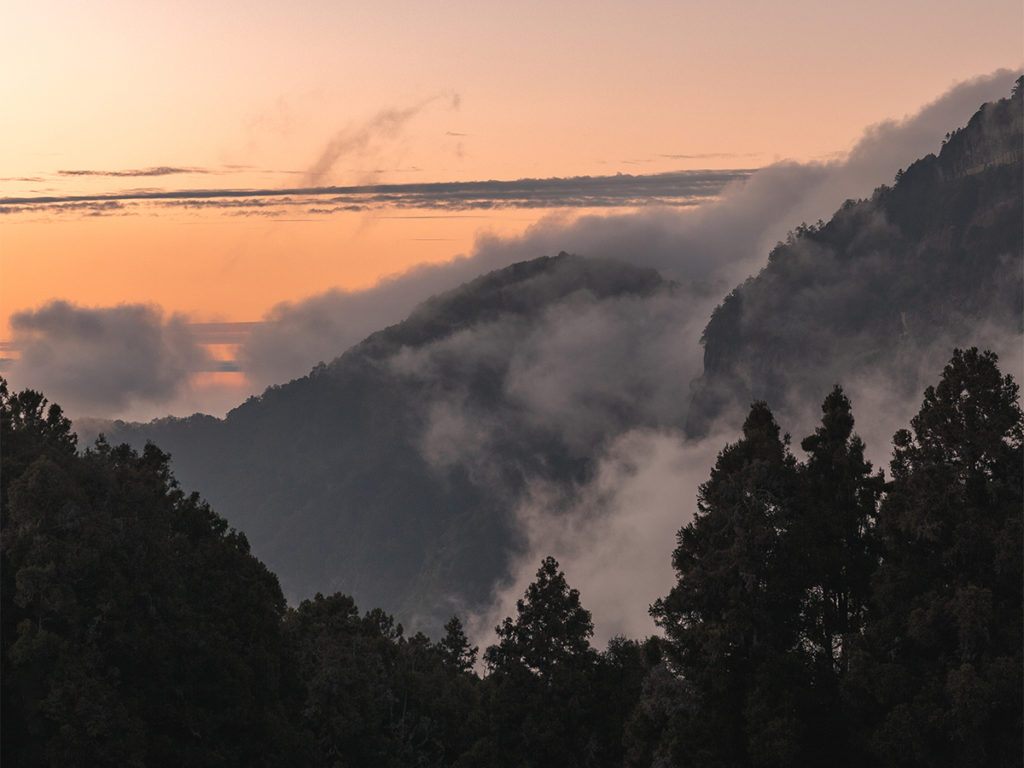
Nestled in the literal heart of Taiwan is Alishan National Forest, a nature lover’s paradise. There are so many hiking trails through lush forests, and its famous foggy sunrises make this a magical place.
Alishan Forest Railway
One of the most popular activities going to Alishan is taking a ride on the Alishan Forest Railway. This historic alpine train takes visitors on a journey through the forest, offering breathtaking views of the surrounding mountains and valleys. The ride is famous for its unique Z-shaped switchbacks and for going through over 50 tunnels and 77 wooden bridges. Be warned: the ride is quite bumpy, but quite the experience!
Hike the forest trails
Another must-do activity in Alishan is hiking. The forest is home to a network of well-maintained trails, offering something for every level of hiker. Whether you’re looking for a leisurely stroll or a challenging hike, there’s a trail for you. One of the most popular trails is the “Sunsets at the Top” trail, which takes hikers to the summit of Alishan for a truly unforgettable sunset experience.
Learn about Alishan’s Indigenous culture
For those interested in Indigenous culture, the Alishan Forest Recreation Area is home to several aborigines tribes. FYI Taiwanese still call indigenous “aborigines.” In the West like the US, that word is deemed derogatory, but we Americans always forget that we’re not the center of the Universe, and English is not everyone’s first language. Visitors can learn about the region’s history and culture by visiting a Tsou cultural village at the base of the mountain, where they can learn about the Tsou people’s customs, walk the Tanaiku suspension bridge, and eat traditional Tsou barbeque food.
Watch on YouTube
Always get travel insurance for international travel!
Whenever I travel internationally, I ALWAYS get supplemental travel insurance to the coverage I have from my travel credit cards. The main reason is for medical purposes because if something happens while overseas, you don’t want to be SOL or stuck with some crazy bill. It’s not expensive and gives peace of mind to know medical expenses are covered should any negative situation happen. I typically shop around insurance companies to compare prices, and went with Safety Wing’s Nomad Insurance.
To keep up to date with everything I share, follow along on my social media and read up on what camera gear I use when I travel.
________________________________________________________________________________________________________________
Pin this post!
